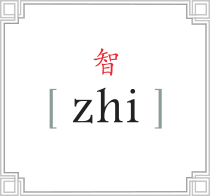Howdy folks! In the spirit of health, wellness, and pure joy, let's talk ripe puer for a moment. Also, check out our newest video on puer.
Puer Fundamentals – Ripe Puerh
What is Puer?
Puer is a variety of fermented tea produced in China. The fermentation style allows the tea leaves to undergo a microbial fermentation and oxidation after they are dried and rolled. This process is a Chinese specialty. There are two types of Puer – Raw and Ripe.
Where is Puer from?
All Puers teas are from a specific region in China – the Yunnan province. Much like true champagne can only be from the Champagne region of France, so must all Puer teas come from this one area of China.
What makes Ripe Puer... Ripe?
"Ripened" Puer has been specially processed to imitate aged "raw" Puer tea. Although it is also known in English as cooked puer, the process does not actually employ cooking to imitate the aging process. The process instead manipulates conditions to approximate the result of the aging process by promoting bacterial and fungal fermentation in a warm humid environment under controlled conditions - a technique which involves piling, dampening, and turning the tea leaves in a manner much akin to composting.
When was Ripe Puer created?
The process of making Ripe Puer was developed in the 1970’s to satisfy the demand for aged Puers in mainland China and Taiwan. By controlled fermentation practices (which takes about 60 days), the puers could achieve optimum taste in a fraction of the time it would take to produce its Raw counterpart (which could take 10-30 years).
What to expect:
Ripe puer has an earthy, rich mouth-feel. Bordering on salty or briny, the cup at first has hints of seaweed and a definite savory quality. With multiple steepings, the tea becomes sweeter and mellower. The liquor is a beautiful deep mahogany brown, and can have a syrupy ‘soy-sauce’ viscosity.
Health benefits:
Ripe puer is wonderful for people with digestive ailments or sensitive stomachs. It can help with circulatory issues as well, being that it moves the ‘qi’ or life-force energy of the drinker. It can also increase one’s “inner-heat” and can result in a restorative form of sweating that can help release toxins from the body. Burping is also a common result of drinking high quality puers!
Steeping:
Western style -
Steep as you would any dark tea. Very hot h2o, 3-4 grams per 12oz h2o, and about 3 min steep. reuse those leaves. You can get many steeps from one serving of leaves.
Eastern style:
In gaiwan or yi xing type pot, use 7-10g, very hot h2o, short steeps, appx 5-10 seconds, increasing time slightly per steep. You can get many steeps this way that evolve over the course of your tea session. this is definitely the recommended way!


